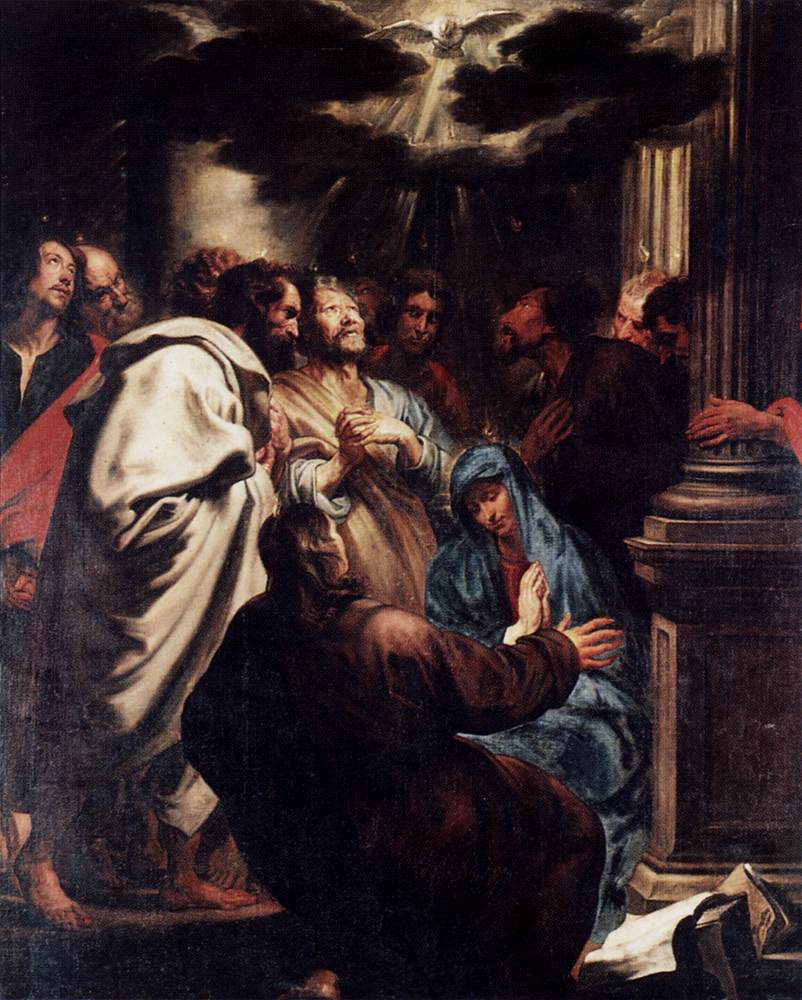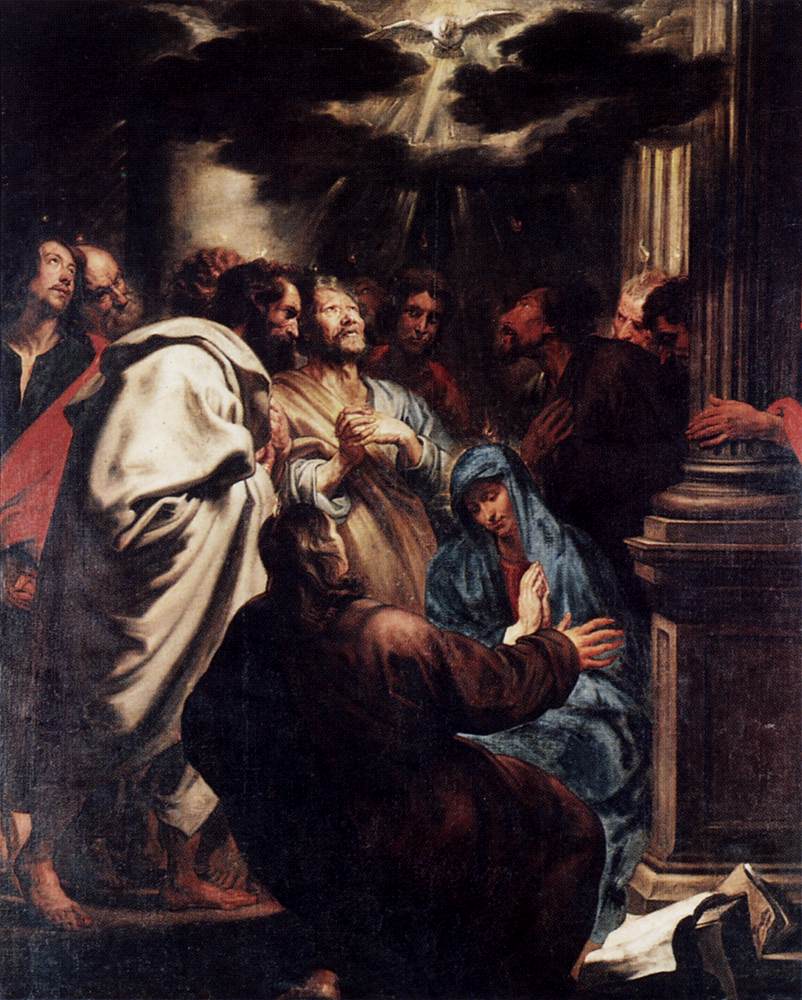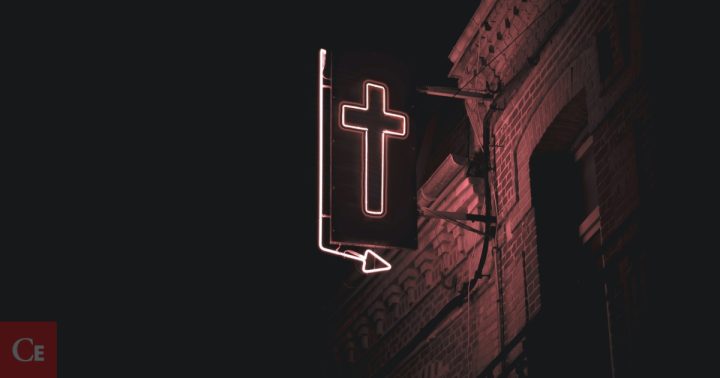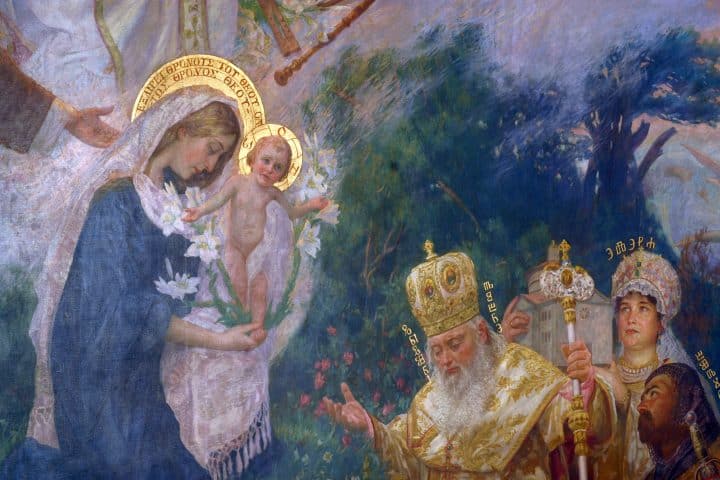Viewing and pondering sacred art, engaging in visio divina, offers the faithful a great way to meditate more deeply on the life of Jesus Christ and the mystery of salvation. This series of articles will highlight several pieces of art related to the glorious Easter season, with specific attention to Scripture readings. Each of these pieces of art allows us to reflect on the astonishing realities of the resurrected life.
The great solemnity of Pentecost marks the culmination of the Easter season. It is the celebration of the full harvest of God’s glory, making available the panoply of graces that God intends to bestow on redeemed humanity. It is also the proverbial “birthday of the Church,” the moment when the new Body of Christ is brought into the world for its specific divine purpose. It is a powerful reality, and we should hope that more and more Christians appreciate and celebrate it.
Anthony van Dyck, a Flemish artist of the Baroque period, has given us an inspiring window into the mystery and power of the Pentecost event. Outpouring of the Holy Ghost, completed in 1620, helps us to understand the reality of this moment and the infant Church more fully. Those who gaze upon and ponder the details of this piece of art find plenty of inspiration for the Christian life as both disciples and apostles.

A viewer’s attention is drawn first to the top third of the image. There, we notice a dark cloud hovering over these followers of Jesus who were hiding “for fear of the Jews” (Jn. 20:19). This symbol could carry a two-fold meaning. First, as we have already discussed in this series, a cloud is significant of God’s presence, guiding His people. Coupled with that first meaning, it is possible for us to understand that a cloud might also causes darkness, a shroud of unknowing and uncertainty, and even fear. What has caused me to feel uncertain and fearful? Despite uncertainty and fear, have I been able to see and know God’s presence with me in any situation?
Breaking through the dark cloud, we see a dove, one of the most common symbols of the Holy Spirit. Looking a bit more closely, a viewer notices that this dove is coming forth from a burst of light in the shape of a triangle, both of which signify the Trinitarian God. Beyond these details, we notice that the bottom portion of the illuminated triangle is not exact and rigid. Instead, the light diffuses downward and outward, separating into rays that point toward each of those gathered in the room. This causes us to reflect on the fact that God has pierced through the dark clouds that hang over our lives and poured out His very life on us. Am I able to see that the Lord continues does this not only for the apostles, but in every age?
The rays of light have tongues of fire at their ends. Fire, of course, is another sign of the Holy Spirit, who has come to rest on the individuals gathered here. At the center of the group is the Blessed Mother, Mary, clad in her traditional blue garment. The ray of light that touches her forms a halo of holiness around her head. One apostle, in the foreground, seems to be falling backward, like he has been knocked over by a powerful rush of wind. These details cause us to understand a bit more fully the awesome power of this moment. Have I realized that I have participated, substantially, in this powerful event by virtue of my own Confirmation? Reflecting on my Confirmation, have I understood it as the source of something new and amazing?
Looking at the make-up of the group gathered here opens up another point for consideration. There are fourteen people gathered. The apostles are young and old; and they are clearly of different ethnic origins. At the far-right edge of the painting, the face of one of the figures is covered. Since there are twelve other men painted, we surmise that this is not meant to depict one of the apostles. This subtle detail might be intended to cause each viewer to think of his or her own presence in this group. This points us to the reality that the Church is universal: She is constituted by all types of persons who seek the Lord; and She is on mission to bring all types of persons under her mantle. Do I realize that I am an essential part of the Church, especially by my Baptism and Confirmation? Do I realize that the mission and objective of the Church is incomplete without me serving in my God-given role?
The face of that fourteenth disciple and apostle is hidden by one of two pillars. These columns clearly point us to the Church Herself. One apostle wraps his arm around the pillar and clings. This might cause a viewer to ask: Do I cling to the Church, the “pillar and bulwark of the truth” (1 Tim. 3:15). Do I cling to Her, as I cling to Jesus, even in overwhelming moments or difficulties?
Two books are depicted at the base of the closest column, in the bottom-right corner of the painting. These are probably meant to depict the Old Testament books by which Mary and the apostles “were devoting themselves to prayer” in the days leading up to this event (Acts 1:14). One book, still on a stand, seems to have been vacated in a hurry, while the other has been strewn on the floor. This small detail should cause us to ponder the connection of Pentecost, and Christianity as a whole, to the prayer and worship of the old covenant. The prayer and worship of the old covenant has not been discarded, but it has been fulfilled and perfected. Especially by the power of Pentecost, God’s chosen people, the New Israel, is able to worship and work “in spirit and truth,” as Jesus promised in Samaria (Jn. 4:23-24). Do I venerate the revelation of the Old Testament, allowing it to open up a deeper understanding of the fullness of God’s plan found in Jesus and the Church?
Each of us who ponders Van Dyck’s painting is mystically brought into the mysterious and powerful moment of Pentecost. By reflecting on its themes and the questions it opens up, each of us can find assistance and inspiration for becoming better disciples and apostles in the Christian mission. Finally, we walk away from viewing this painting knowing that we have been chosen by God and sent into the world to accomplish His purposes. Let’s pray that we spend the remainder of the liturgical year, and every year, accomplishing that mission.
The Outpouring of the Holy Ghost is in the public domain.




